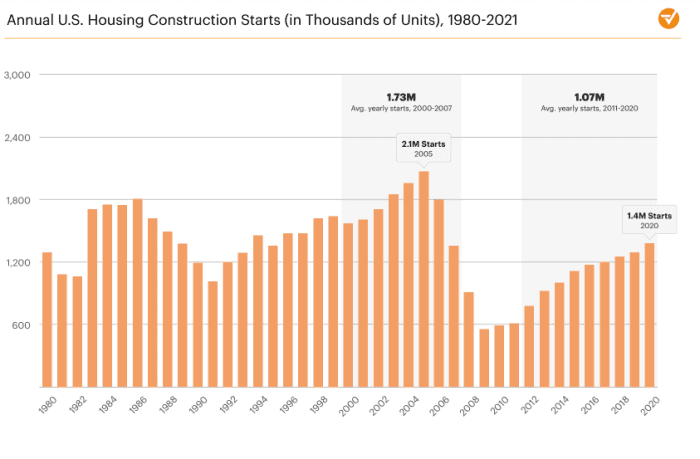
Read Original Article Here by MarketWatch
Private home construction now near 2006 levels, thanks to multifamily development
There still aren’t enough homes being built. That is the bad news for first-time property buyers in Tuesday’s U.S. housing data, showing construction starts increased at a seasonally-adjusted annual rate of 1.62 million in August.
The good news shows home starts climbed 3.9% from a month before, inching closer to the 1.8 million annual rate last seen in 2006 before new construction fell off the cliff in the wake of the 2008 financial crisis.
The bigger problem? Single-family home starts fell in August for a second month in a row to a yearly rate of 1.05 million, with the monthly boost driven by 632,000 new multifamily construction starts on buildings with five units or more, according to U.S. Census data.nullAdvertisement
Read: New-home construction activity improves, as builders focus on high-margin projects
For context, the past decade saw an average 1.07 million housing starts yearly (see chart), or well below the 1.73 million annual average for the past 20 years.

“The outcome was stronger than expected,” Barclays’ economic team led Blerina Uruci, wrote in a Tuesday note, despite the continued drop in new construction of single-family properties.
“In our view, the housing market outlook is still positive, but hinges on an easing of supply bottlenecks,” including in lumber LB00, -4.80% and with labor shortages, Uruci’s team wrote.
What to expect in housing
Home prices have skyrocketed in the past year of the pandemic, with smaller metro areas leading the charge higher. Prices in Boise, Idaho, climbed 46%, followed close behind by an 45% increase in Austin, Texas, according to Zillow data included in a new housing report from Tomvest Ventures.
The boom has been partly due to low 3% mortgage rates and the rise of remote work, but also to a longstanding lack of enough new construction. TomVest’s Nima Wedlake pointed out that some 12.3 million American households were formed from January 2012 to July 2021, while only 7 million new single-family homes were built in the same stretch.